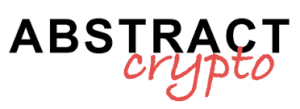The Secretary of the Treasury Yellen has recently stated that further regulation of stablecoins is needed in the United States (USA).
During a hearing with lawmakers, he emphasized the need for a federal regulator to have the power to determine whether a stablecoin issuer should be prevented from issuing such asset.
Let’s see below all the details.
USA: greater regulation on stablecoins to ensure safety and stability
As anticipated, the Secretary of the Treasury of the United States (USA), Janet Yellen, has informed lawmakers that the government’s financial regulatory authorities wish to establish a minimum level of federal regulation for stablecoin issuers.
This system would aim to establish universal compliance standards beyond the current regulations applied by states like New York and Texas.
Speaking before the House Financial Services Committee, Yellen indicated that the council of financial regulators considers the implementation of a federal regulatory plan that encompasses all states crucial.
He also emphasized that a federal regulator should have the authority to determine whether stablecoin issuers should be prevented from issuing such assets.
Dispute regarding stablecoin regulations
The issue of regulating stablecoins has become a significant point of conflict in US legislation.
While Republicans have advocated for greater authority for state regulators, Democrats and Treasury Department of Yellen have maintained the position in favor of federal authority.
Despite this split, the committee previously approved a bill on stablecoins with the support of some Democrats, pending a vote in the House.
The chairman of the committee, Patrick McHenry (R-N.C.), led this legislative initiative, raising the issue during a hearing focused on the work of the Financial Stability Oversight Council.
Yellen also addressed the proposal of the Securities and Exchange Commission (SEC) of the United States to further limit the custody of client assets by investment firms, including those in cryptocurrencies.
The proposed regulation, currently being evaluated by the agency, has raised concerns and criticisms from various parties, including bankers, legislators, and other regulatory authorities.
The Secretary of the Treasury has indicated that concerns have been raised about the impact of the regulation on banks during the hearing.
Finally, Yellen referred to the FSOC’s warnings to Congress and the cryptocurrency industry.
In particular, emphasizing that, in the absence of new regulations, the council may be forced to intervene autonomously, also through the imposition of supervision by the Federal Reserve on certain aspects of the sector.
Is the renaissance of stablecoins coming?
The recent report by JPMorgan highlighted a significant increase in the market capitalization of stablecoins. Specifically, it indicated a potential positive boost for the entire crypto ecosystem.
After a period of decline, with the market capitalization of stablecoins reaching its lowest point in October 2023, the sector has shown a significant recovery. In particular, it has accumulated an increase of 9 billion dollars by January 2024.
This recovery occurred following a tumultuous period marked by the collapse of the Terra network and a contagion effect that has put other stablecoins and cryptocurrency lenders in difficulty.
Since always, the growth of stablecoins is often interpreted as a positive sign of trust and interest from investors in the cryptocurrency market.
However, uncertainties remain. Episodes like the regulatory crackdowns involving stablecoins such as Binance USD (BUSD) and USD Coin (USDC) highlight the challenges of the industry.
The USD Coin story, in particular, has encountered obstacles related to Silicon Valley Bank, raising questions about its stability tied to the US dollar and contributing to the evolving regulatory framework.
Tether (USDT), the dominant stablecoin, is under scrutiny for its opacity and regulatory compliance issue. The raised criticisms raise doubts about the sustainability of its dominance.
On the contrary, the USDC now seems to be navigating well through regulatory challenges, projecting a possible revolution in the stablecoin hierarchy.
In the United States, legislative complexities involve Senator Cynthia Lummis, who is instrumental in guiding stablecoin legislation through intricate negotiations.
The dialogue, involving the entire political spectrum, reflects the delicate balance between innovation and supervision. The optimism of crypto policy supporters in the Senate suggests prospects for legislation on stablecoins with possible developments on the horizon.


